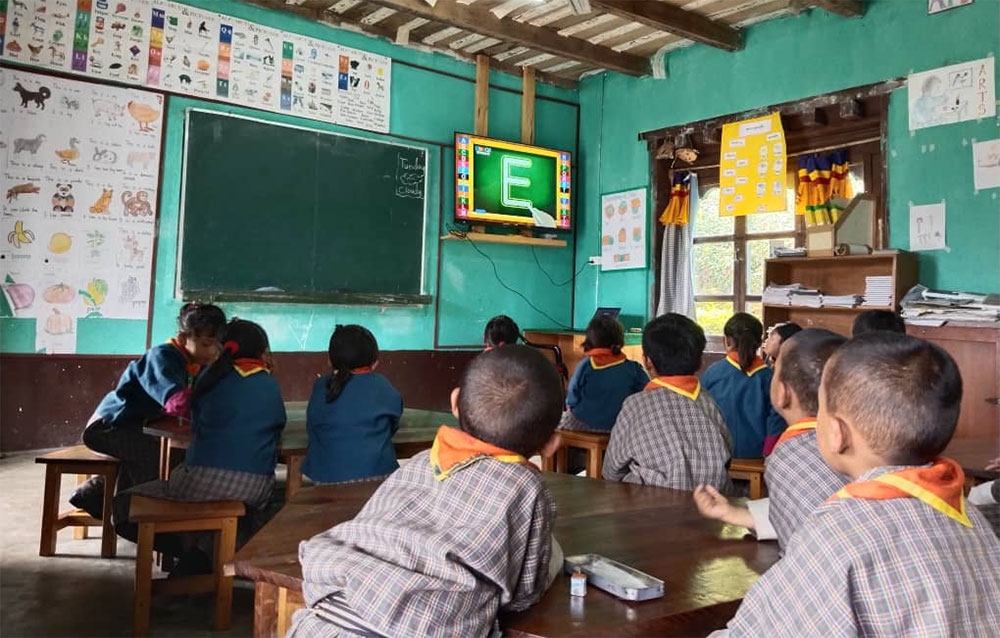Lhakpa Quendren
The introduction of smart televisions (TVs) in all classrooms at Bjoka Primary School in Zhemgang has transformed the learning experience, making it more engaging and interesting.
Despite the school’s remote location, it takes great pride in being the first school in the dzongkhag to have smart TVs in every classroom.
This initiative is a response to the need for modern education and equipping classrooms with high-tech tools and equipment to provide a more efficient and interactive learning experience for students.
Leki, the school principal, explained that this initiative is aimed at aligning the school’s learning system with the evolving technology of the modern world.
He said, “It helps classrooms enhance students’ daily learning. We also showcase local wildlife programmes to our students and these smart televisions can ensure regular classes even in the absence of teachers.”
Leki said that teachers can utilise smart hardware and software to increase student motivation and engagement, saying, “The televisions provide students with access to digital resources through links, which our teachers use to create lesson plans, making their work much more convenient.”
However, he pointed out that irregular power outages have disrupted the school’s daily activities, adding, “With a stable power supply, learning and teaching would become much smoother without interruptions.”
The Bjoka gewog administration provided seven smart TVs for each classroom, and the Black Mountain Park and Druk Nyo Foundation contributed one TV each to the school.
While there is no formal agreement between the school and gewog administrations, the ICT and lab teachers have been tasked with managing and maintaining the televisions.
Jigme Singye, officiating principal of Goling Primary School, praised the use of smart TVs, stating that they are more effective than traditional whiteboards.
He said, “Television helps students learn faster as it caters to different learning styles. It brings many benefits, as our students are enthusiastic about learning through visuals. For example, when it’s time for coding class, the kids get really excited because it aligns with their age.”
To support teaching and learning, the Zhemgang’s dzongkhag education sector distributed 20 smart televisions to schools.
Pelden Wangmo, Zhemgang’s chief education officer, said that the dzongkhag education sector proposed transitioning to digital education in the 13th Five-Year Plan. She emphasized that they are collaborating with gewogs to include a budget allocation for upscaling digital literacy and educational resources in schools.
“This approach goes beyond traditional textbooks and chalkboards while also promoting interactive learning. It has not only delivered educational benefits but also provided recreational programmes that keep students engaged and enhance their digital literacy,” Pelden Wangmo said.
She noted that expanding digital learning resources to rural students will improve their access to 21st-century technology.


